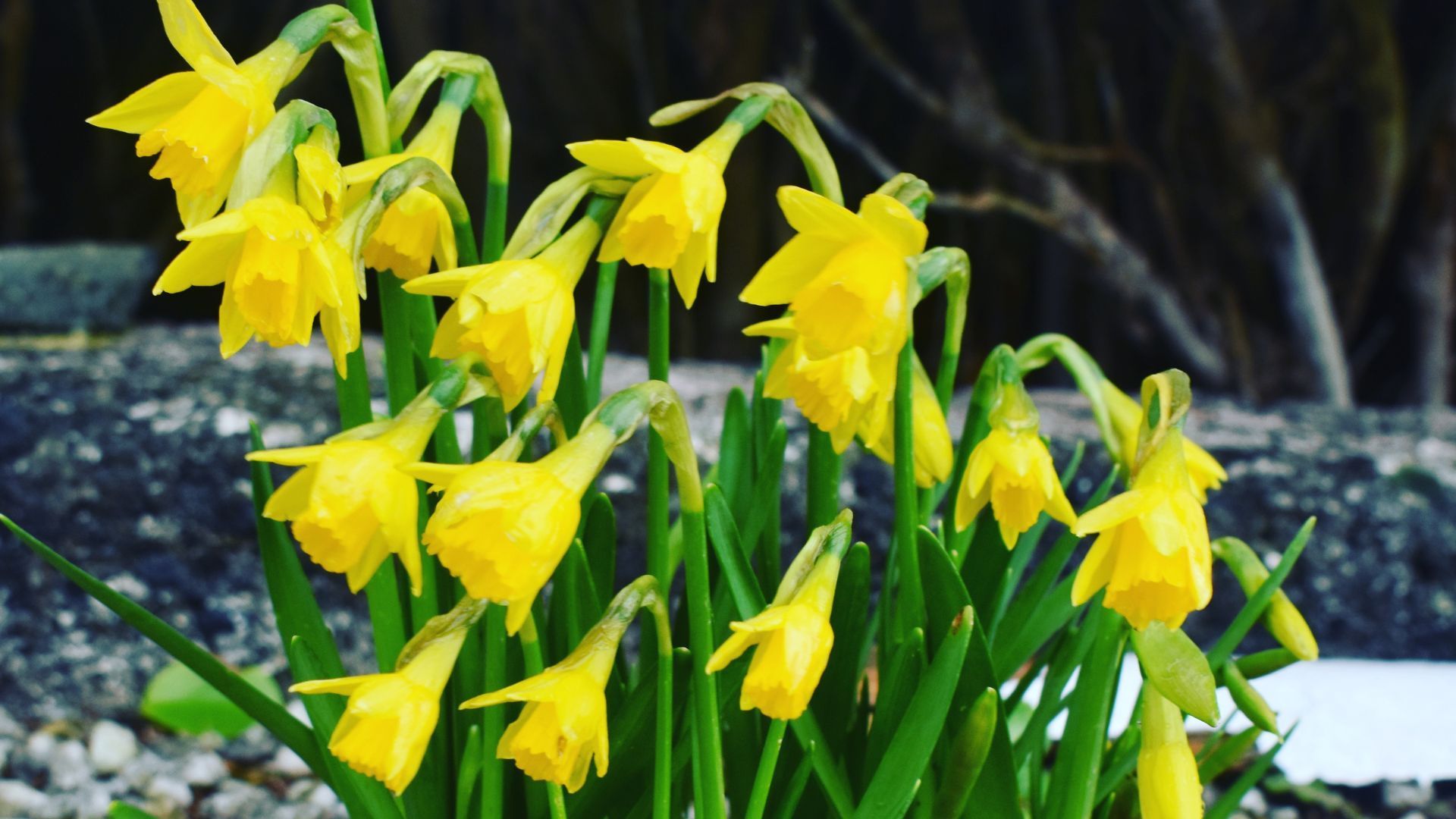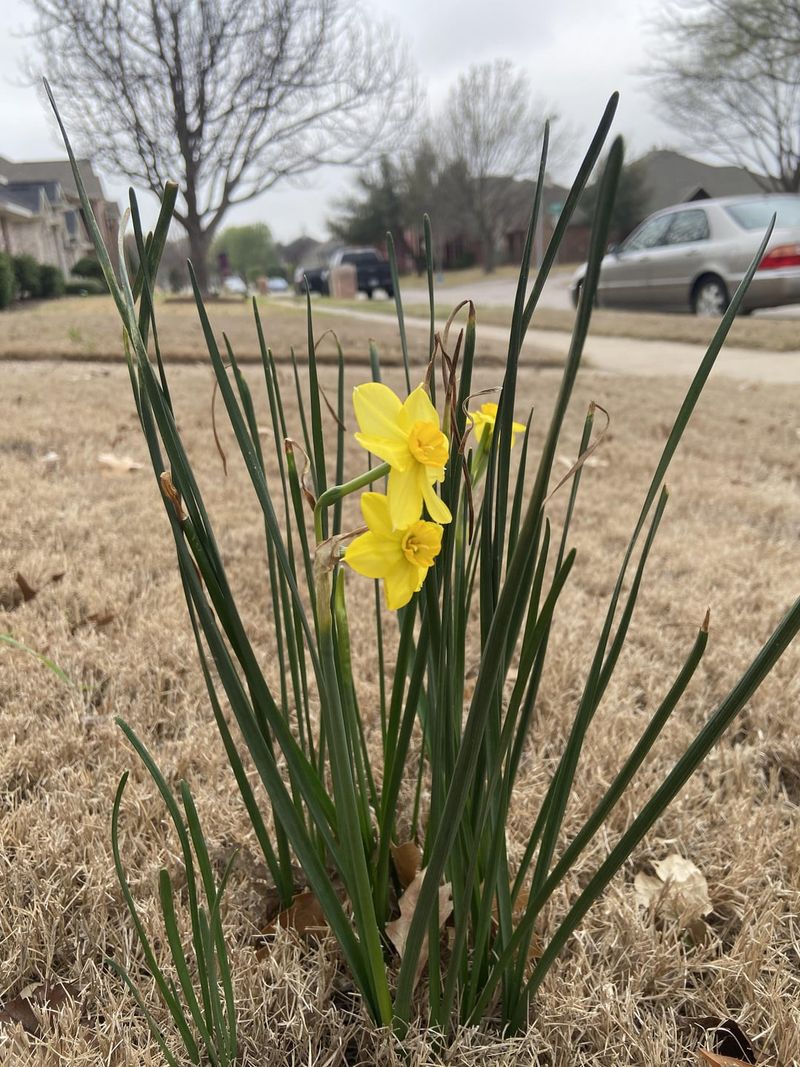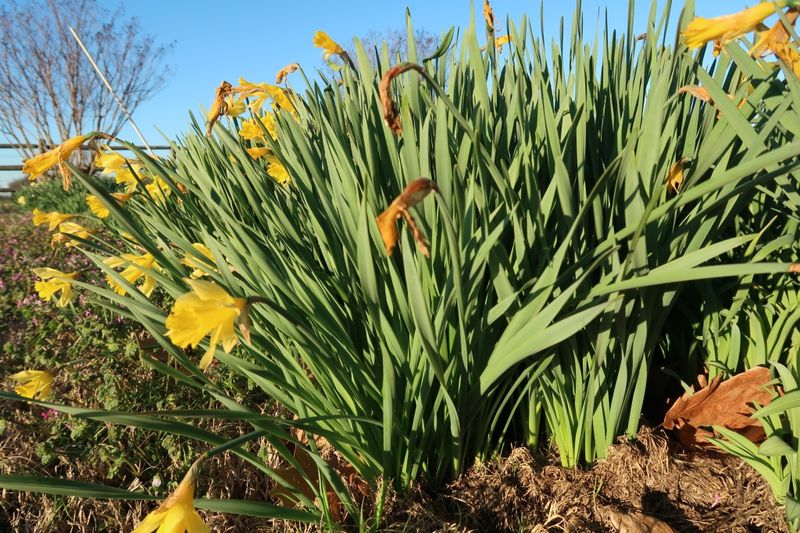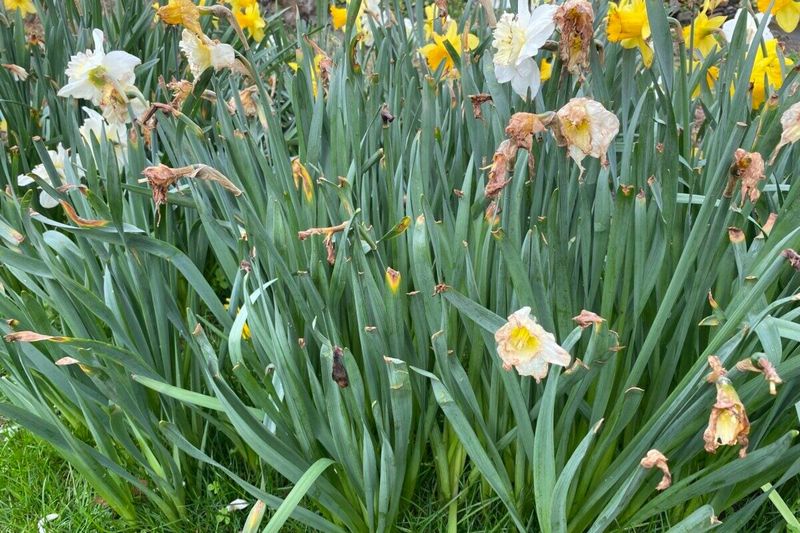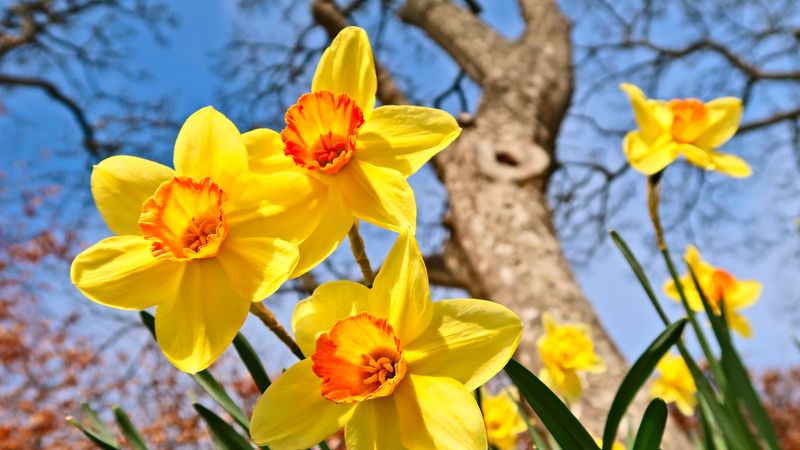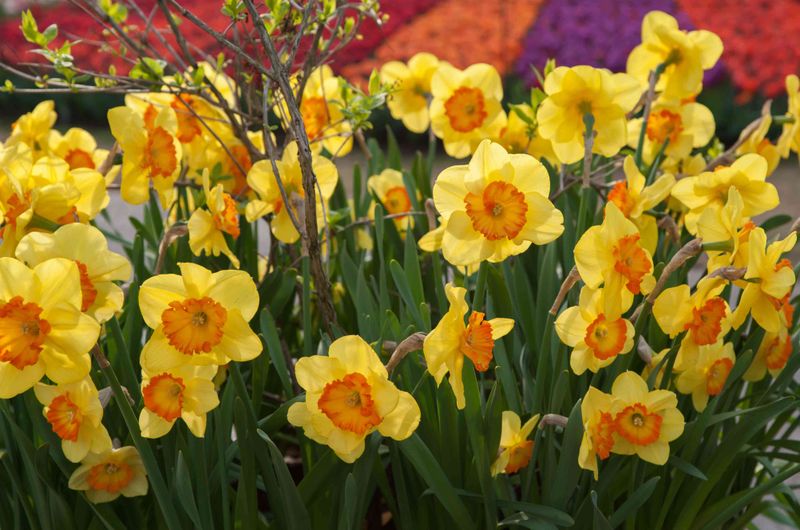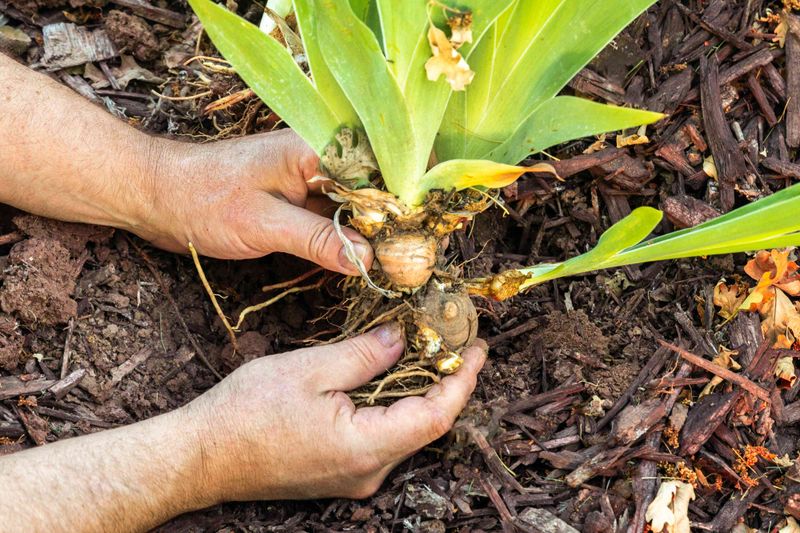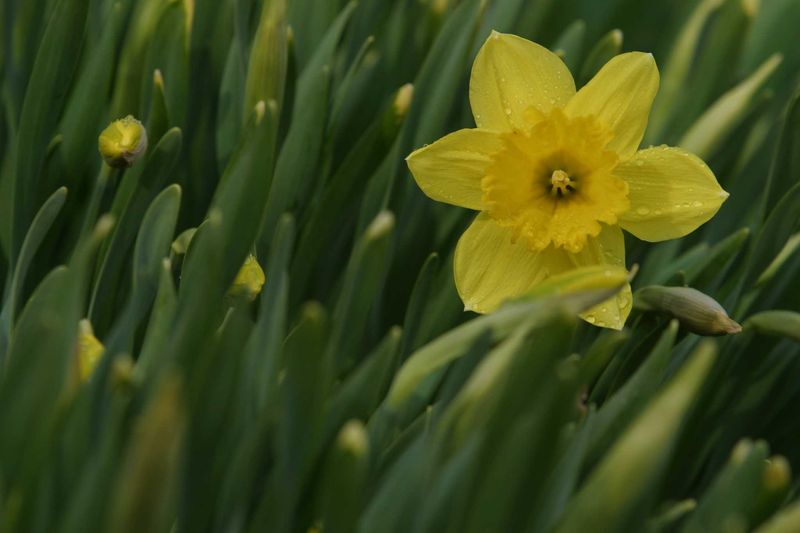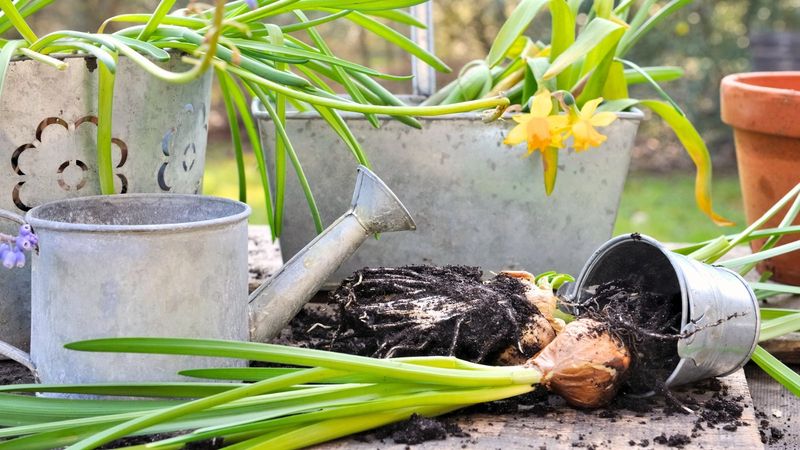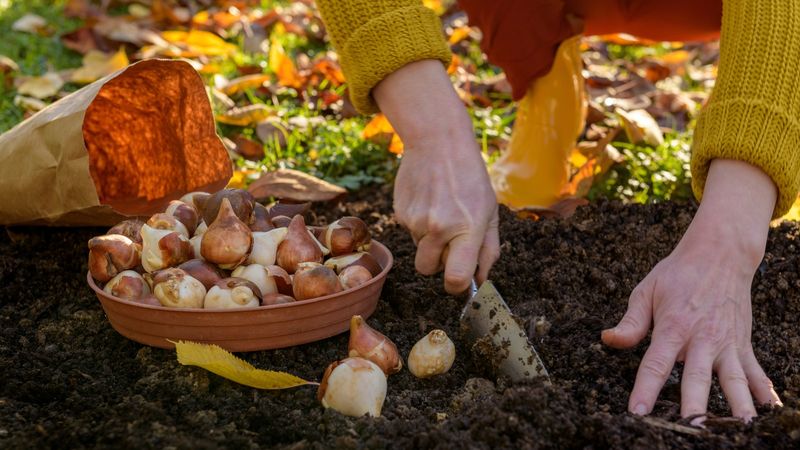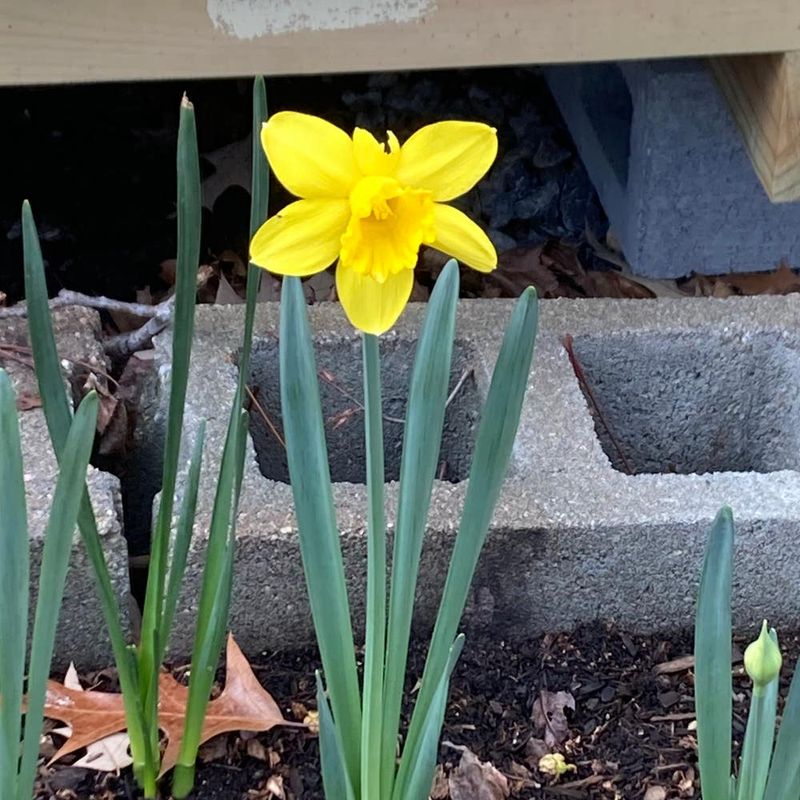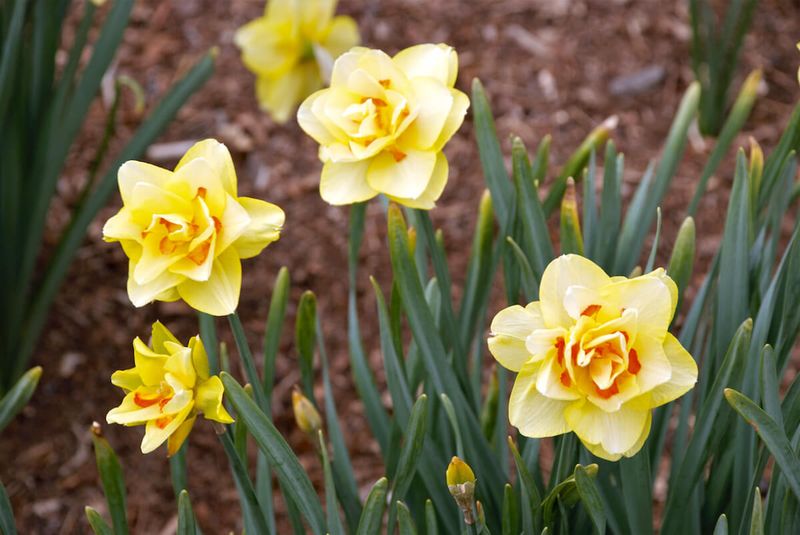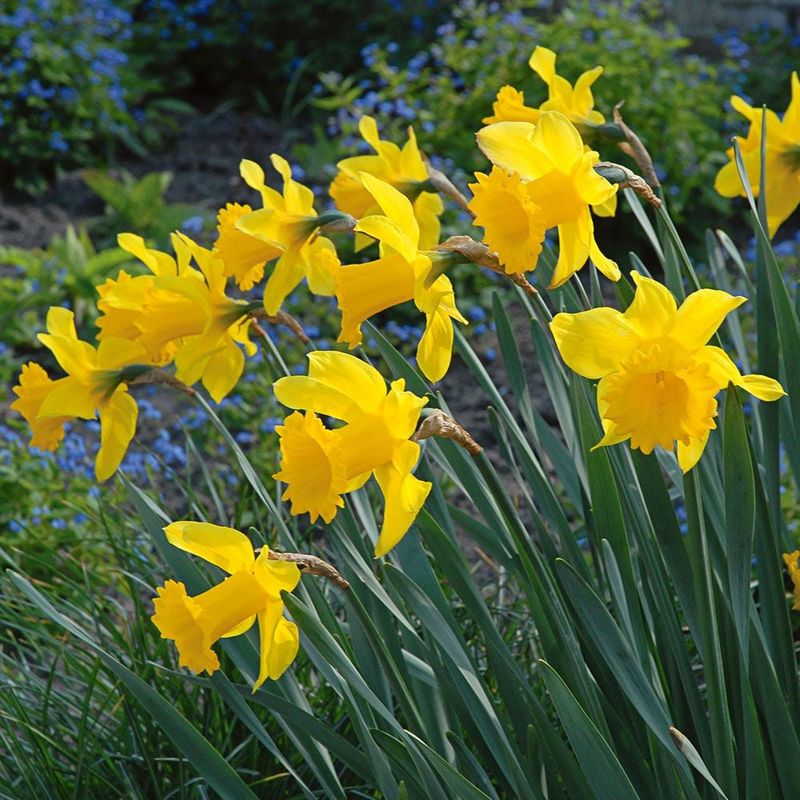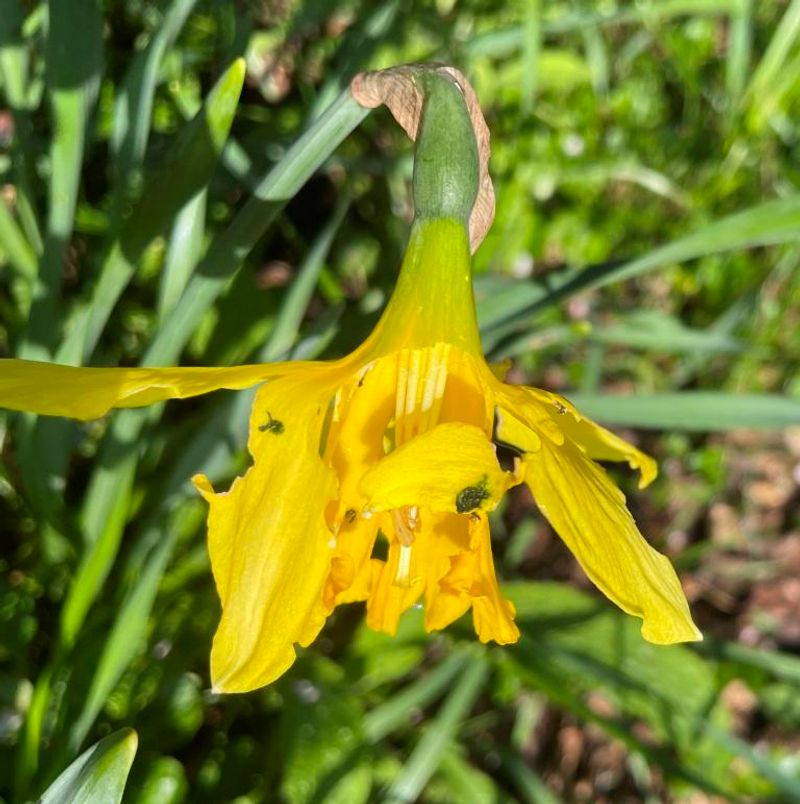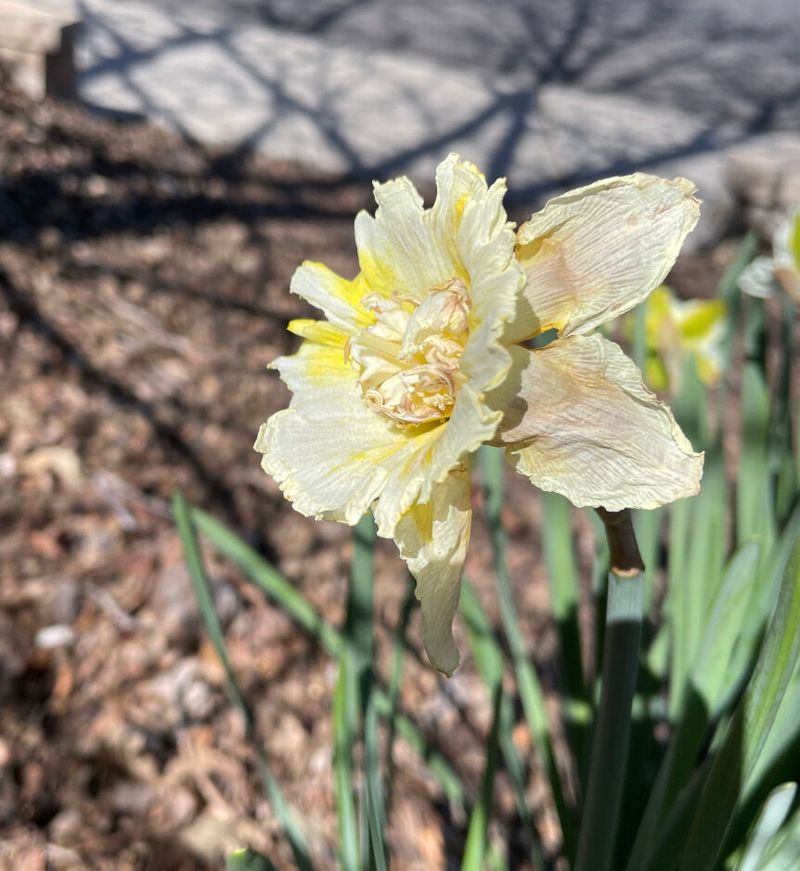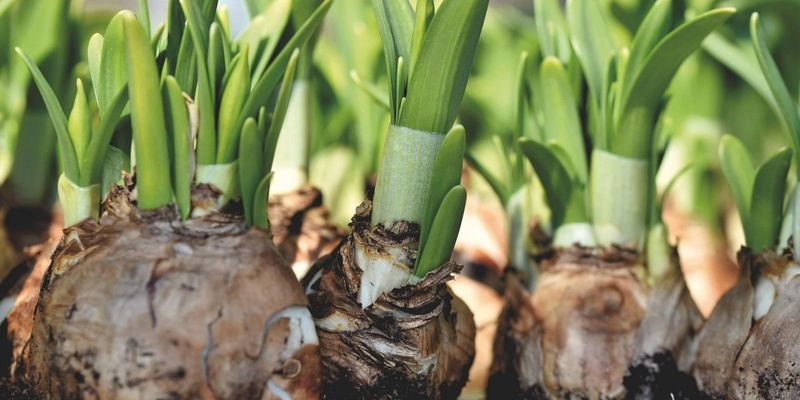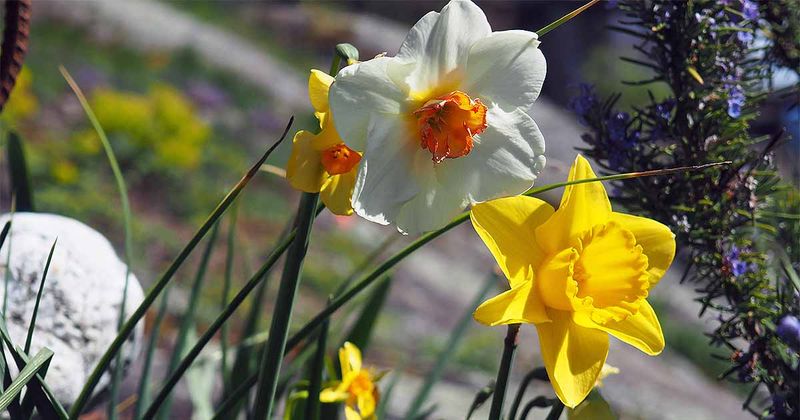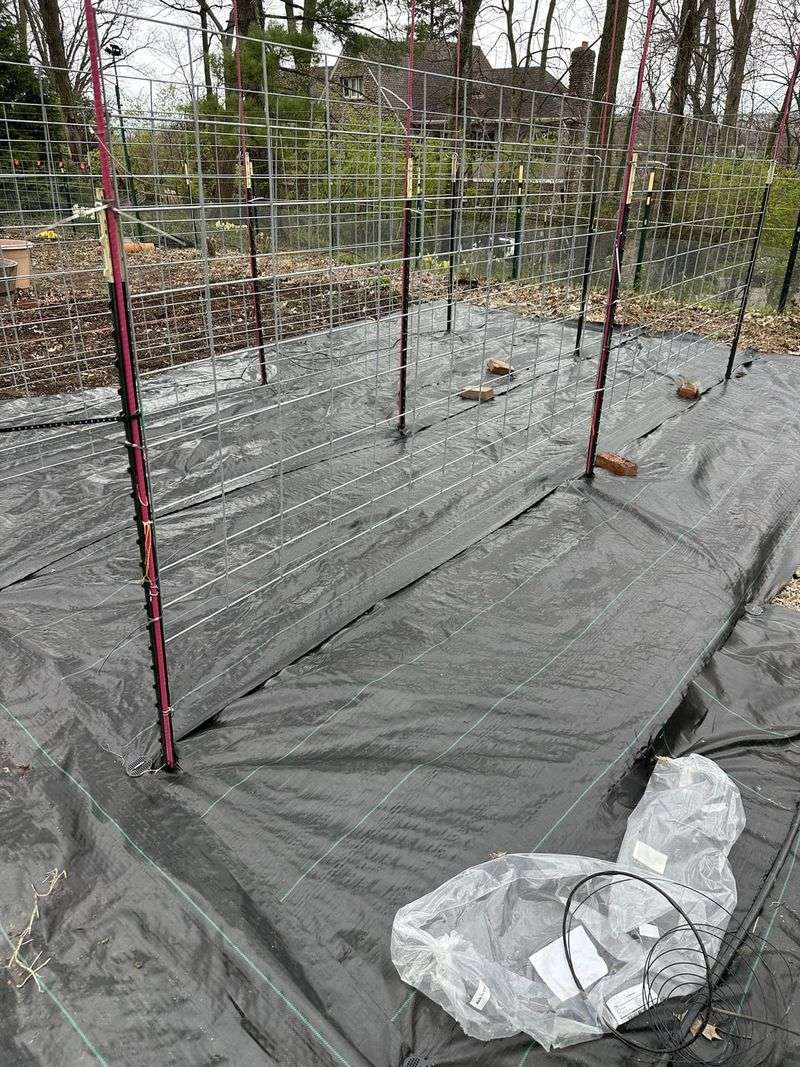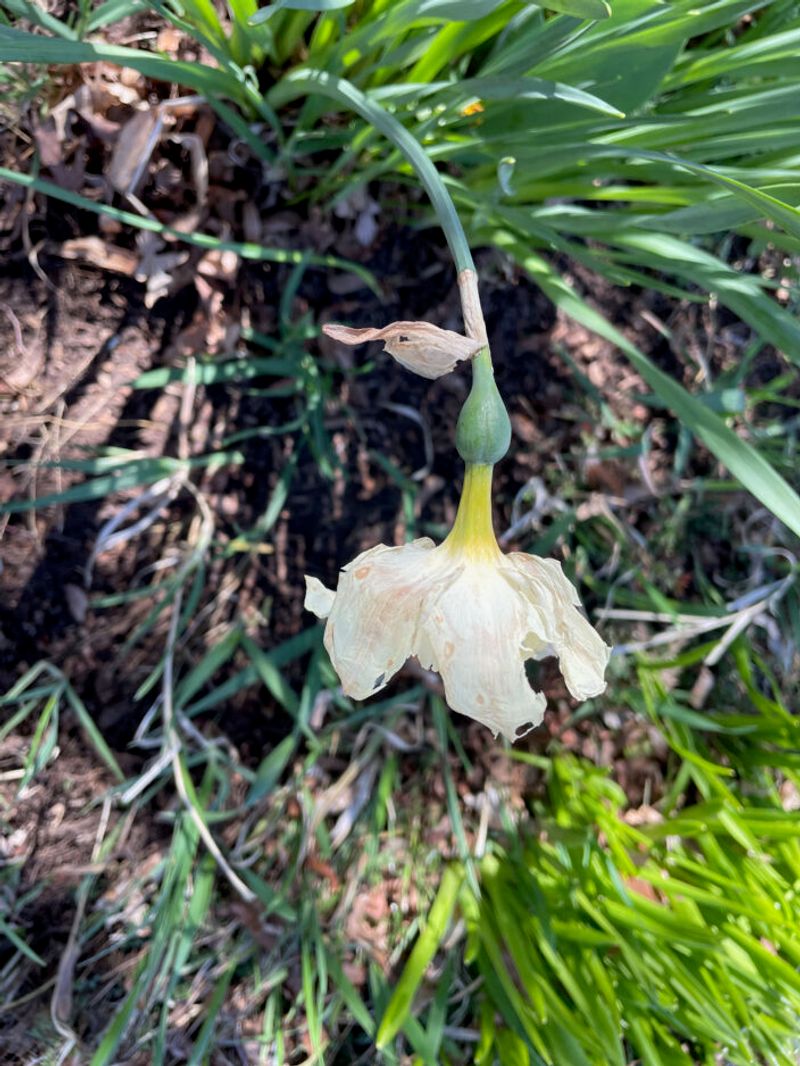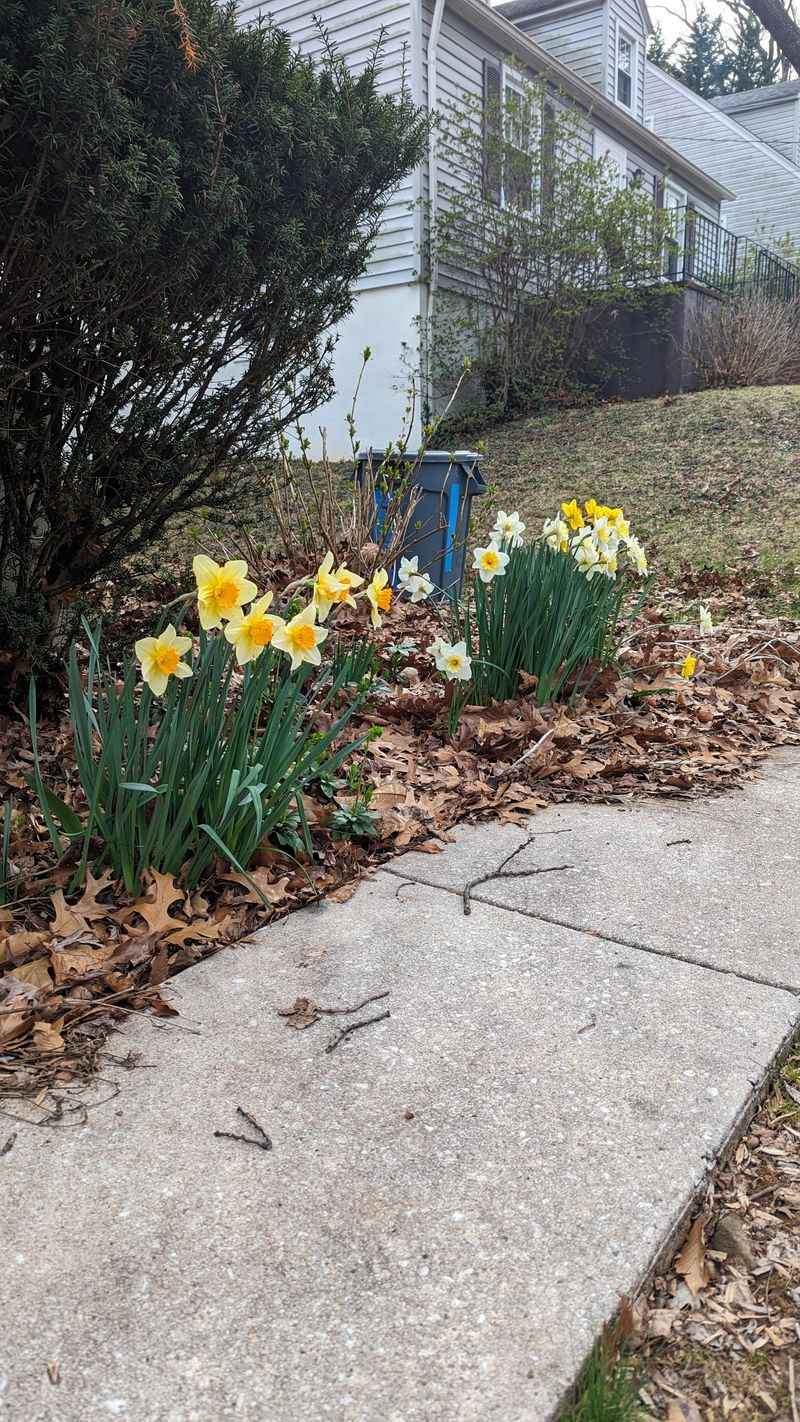Daffodils are one of those joyful signs that spring has truly arrived—I always smile when I see those bright yellow blooms pop up. But once the flowers fade, it’s easy to forget about them or rush to tidy up. That’s where many gardeners (my past self included!) unknowingly make mistakes.
I used to think cutting everything back right away was the right move, but it turns out that can do more harm than good. The leaves need time to soak up energy for next year’s blooms, and messing with that process can leave you with fewer flowers down the line. It’s one of those small things that makes a big difference.
Once I learned what not to do, my daffodils started coming back stronger and even multiplying. In this guide, I’ll share what to avoid after your daffodils bloom—and what to do instead—so you can enjoy a fuller, brighter display every spring.
1. Cutting Back Foliage Too Early
Removing daffodil leaves while they’re still green deprives bulbs of essential energy. After flowering, those green leaves are busy photosynthesizing and storing nutrients that fuel next year’s blooms. Cutting them too soon can result in smaller bulbs and fewer flowers next spring.
Wait until the foliage turns yellow and begins to flop over naturally, which usually takes about six weeks after blooming. This patience allows the plant to complete its energy storage cycle.
If you dislike the messy appearance of dying foliage, try planting daffodils among later-emerging perennials whose growth will help hide the yellowing leaves.
2. Braiding Or Folding Leaves
Some gardeners try to tidy their gardens by braiding, rubber-banding, or folding daffodil leaves after flowering. This practice severely limits the leaf surface exposed to sunlight, reducing photosynthesis and weakening the bulbs.
Let those leaves sprawl naturally instead. Each leaf surface needs maximum sun exposure to generate energy for next year’s flowers. The plant can’t photosynthesize efficiently when leaves are bound together.
For a neater garden appearance, plant daffodils in clusters among later-blooming perennials or ornamental grasses that will grow up and camouflage the aging daffodil foliage.
3. Mowing Over Daffodil Patches
Running the lawnmower over daffodil patches in grassy areas before leaves have yellowed completely cuts off their energy supply. Even raising the mowing height isn’t enough—any cutting of green leaves reduces next year’s blooms.
Mark daffodil areas with stakes as a reminder, and mow around these zones until foliage has completely yellowed. This might mean waiting until late June in some regions, but your patience will be rewarded with stronger blooms.
Consider planting daffodils in dedicated beds rather than lawns if the unmown patches bother you. Or choose very early varieties that complete their cycle before the main mowing season begins.
4. Removing Spent Flowers Incorrectly
Yanking off spent daffodil flowers can damage the developing seed pod and surrounding foliage. While deadheading is beneficial to prevent energy waste on seed production, doing it incorrectly harms the plant.
Use clean, sharp scissors or pruners to snip off just the flower head and developing seed pod (the swollen green part right behind the flower). Leave the stem intact—it’s also photosynthesizing and contributing energy to the bulb.
Make your cut at the base of the flower where it meets the main stem, not lower down. This prevents disease entry while allowing the remaining green stem to continue feeding the bulb.
5. Applying High-Nitrogen Fertilizer
High-nitrogen fertilizers promote lush foliage at the expense of flowers and can actually decrease blooming in subsequent years. Many gardeners mistakenly use the same all-purpose fertilizer they apply to other garden plants.
Choose a low-nitrogen, high-phosphorus fertilizer instead. Look for a bulb-specific formula or one where the middle number (phosphorus) is highest. Apply this when shoots first emerge and again after flowering.
Bone meal makes an excellent natural alternative, providing the phosphorus that encourages strong root development and flower formation without excess nitrogen that would stimulate too much leaf growth.
6. Overwatering After Blooming
Excessive moisture around daffodil bulbs after flowering can lead to rot and fungal diseases. Many gardeners continue regular watering schedules without realizing daffodils need different treatment post-bloom.
Reduce watering gradually after flowers fade. Daffodils naturally prepare for dormancy as temperatures rise, and soggy conditions during this phase can damage bulbs. Let rainfall be your guide in most regions.
If you’re in an area with summer rainstorms, consider planting daffodils on slight slopes or in raised beds where water drains away quickly. Good drainage is essential for healthy bulbs during their dormant period.
7. Forgetting To Divide Overcrowded Clumps
Daffodil bulbs multiply over time, forming dense clumps that compete for nutrients and space. When left undivided for many years, flowering decreases dramatically as bulbs become too crowded.
Dig and divide daffodil clumps every 3-5 years, ideally in late summer when they’re fully dormant. Separate the bulbs gently and replant immediately, spacing them about 6 inches apart and at a depth three times their height.
Look for natural separation points between bulbs, and don’t worry about smaller offsets—these “daughter” bulbs will grow to flowering size within a year or two if given proper space and planting depth.
8. Storing Lifted Bulbs Improperly
Improper storage conditions can damage daffodil bulbs if you need to lift and store them temporarily. High humidity or airtight containers promote mold growth, while excessive heat can destroy the flower embryo inside the bulb.
Store lifted bulbs in paper bags or open cardboard boxes with good air circulation. Keep them in a cool, dry place with temperatures between 60-70°F. A garage or basement often works well.
Check stored bulbs occasionally for signs of mold or shriveling. Discard any that feel soft or show discoloration, and replant the healthy ones by early fall for best results the following spring.
9. Neglecting Fall Replanting
Leaving daffodil bulbs out of the ground too long after lifting them reduces their vigor and flowering potential. The natural cycle depends on bulbs being in the ground during fall to develop roots before winter dormancy.
Aim to replant daffodil bulbs by early October in most regions. This gives them time to establish roots before freezing temperatures arrive. Even store-bought bulbs perform best when planted early rather than waiting until the last minute.
Mark your calendar with a replanting reminder if you’ve lifted bulbs for division or garden redesign. The longer they stay out of the ground past early fall, the more their performance will suffer next spring.
10. Planting In Poorly Drained Soil
Clay soil or areas that collect standing water will cause daffodil bulbs to rot during their dormant summer period. Even bulbs that survive spring in wet conditions often succumb to rot during summer dormancy.
Improve drainage before planting by adding coarse sand and compost to heavy soils. In problematic areas, create raised beds or mounds for bulb planting to ensure water moves away from the bulbs.
Consider adding a handful of grit or perlite to each planting hole in heavy soils. This creates a drainage zone directly beneath the bulb that prevents water from pooling around it during summer rainstorms.
11. Using Fresh Manure As Fertilizer
Fresh animal manure contains high ammonia levels that can burn bulbs and disrupt their growth cycle. Many gardeners apply it thinking they’re helping their daffodils, when they’re actually causing harm.
Use only well-composted manure that has aged for at least six months. The aging process neutralizes the ammonia and harmful compounds while preserving the beneficial nutrients. Apply a thin layer around plants after flowering.
Better alternatives include compost, leaf mold, or commercial bulb fertilizers specifically formulated for spring-flowering bulbs. These provide balanced nutrition without the risks associated with fresh manure.
12. Removing Mulch Too Early In Spring
Pulling away protective mulch at the first sign of daffodil shoots can expose emerging growth to damaging freeze-thaw cycles. Early spring weather is unpredictable, and tender shoots need protection from sudden cold snaps.
Leave winter mulch in place as shoots emerge, gently pulling it aside only from the growing tips. The mulch will continue protecting the soil and roots from temperature fluctuations while allowing the shoots to grow.
Wait until your last frost date has passed before completely removing winter mulch from daffodil beds. Then apply a lighter layer of compost or fine mulch that won’t interfere with the developing foliage.
13. Applying Thick Mulch After Flowering
Piling heavy mulch around daffodil foliage after flowering can promote disease by trapping moisture against leaves. It also creates hiding places for slugs and snails that may damage the foliage.
Keep mulch away from the base of plants during the post-flowering period. Apply any summer mulch only after foliage has completely died back and been removed, to suppress weeds over the dormant bulbs.
If summer weed suppression is needed while leaves are still yellowing, use a very light layer of fine compost that won’t hold excessive moisture against the foliage. Avoid bark chips or straw until plants have fully died back.
14. Ignoring Pest Damage
Pests like narcissus bulb flies and nematodes can severely damage daffodil bulbs if left unchecked after flowering. The damage often goes unnoticed until the following spring when plants fail to emerge or produce weak growth.
Inspect foliage regularly for holes, distorted growth, or yellowing that doesn’t follow the normal die-back pattern. Remove and destroy any infected plants immediately to prevent spread to healthy bulbs.
Consider lifting and inspecting bulbs if you notice declining performance. Healthy bulbs should feel firm and heavy for their size. Discard any with soft spots, holes, or obvious damage to maintain the health of your daffodil collection.
15. Planting In Excessive Shade
Relocating daffodils to shady spots after they’ve finished flowering can severely reduce next year’s blooms. Daffodils need at least 6 hours of direct sunlight after flowering to generate enough energy for the following year.
Keep daffodils in sunny locations even after blooming ends. If your garden design requires moving bulbs, wait until foliage has completely yellowed before lifting them, and replant in a sunny spot.
For areas that receive spring sun but summer shade (such as under deciduous trees), choose early-blooming daffodil varieties. These complete most of their growth cycle before the tree canopy fills in, making them better adapted to these challenging conditions.
16. Compacting Soil Around Bulbs
Walking on daffodil beds after flowering compacts the soil, reducing air circulation and making it difficult for bulbs to expand naturally. Many gardeners don’t realize their spring garden maintenance routines may be harming dormant bulbs.
Create defined pathways through bulb plantings and use stepping stones for access to other plants. This prevents soil compaction directly over bulbs during summer maintenance when daffodils are dormant but still developing underground.
Gently loosen the top layer of soil around dormant daffodil areas in fall using a hand fork, being careful not to dig deeply enough to disturb the bulbs. This improves aeration without causing damage.
17. Disturbing Roots With Aggressive Weeding
Vigorous weeding around daffodils after flowering can damage their shallow roots and emerging offsets. Using tools like hoes and cultivators too deeply disrupts the bulb’s ability to absorb nutrients during the critical post-bloom period.
Hand pull weeds carefully around daffodil foliage, being gentle near the base of plants where new bulblets may be forming. For established weeds, cut them at soil level rather than pulling when close to daffodil roots.
Apply a pre-emergent weed preventer in early spring before weeds germinate. Products containing corn gluten meal provide natural weed suppression without harming established daffodils and reduce the need for mechanical weeding later.
18. Using Weed Barriers Incorrectly
Placing impermeable landscape fabric or plastic under daffodil plantings prevents natural bulb division and root growth. These barriers might seem helpful for weed suppression but ultimately harm the long-term health of your daffodil display.
If weed suppression is needed, use permeable materials specifically designed for bulb plantings. These allow water drainage and some root penetration while still reducing weed pressure. Better yet, use organic mulches that break down over time.
For new plantings, consider a sandwich layering technique: soil, bulbs at proper depth, more soil, then a thin layer of compost topped with fine mulch. This creates natural weed suppression without restricting bulb growth.
19. Applying Herbicides Carelessly
Spraying non-selective herbicides near daffodils can cause damage even after flowering has finished. The foliage absorbs these chemicals, which then move to the bulb and can affect next year’s growth.
Shield daffodil foliage with cardboard or plastic when spraying nearby weeds. Better yet, avoid chemical herbicides entirely in bulb beds and opt for hand-weeding or targeted spot treatments with natural alternatives.
If herbicide use is absolutely necessary, choose products specifically labeled as safe for bulbs and apply according to directions when there’s no wind. Morning applications allow foliage to dry completely before evening dew might spread the product.
20. Letting Debris Accumulate
Fallen flowers and decaying leaves left on daffodil foliage create perfect conditions for fungal diseases like botrytis. This debris traps moisture against healthy tissue and can serve as infection entry points.
Remove spent flowers promptly and clear away fallen tree leaves or other garden debris that lands on daffodil foliage. This simple maintenance task significantly reduces disease pressure during the critical post-bloom period.
A gentle leaf blower on low setting can help clear debris from daffodil patches without damaging the foliage. In larger plantings, this is more efficient than hand-cleaning and reduces the risk of trampling plants.

